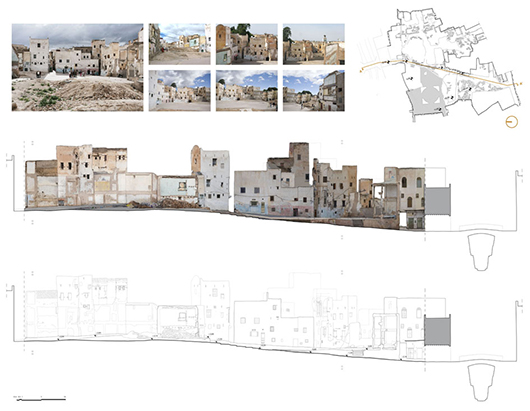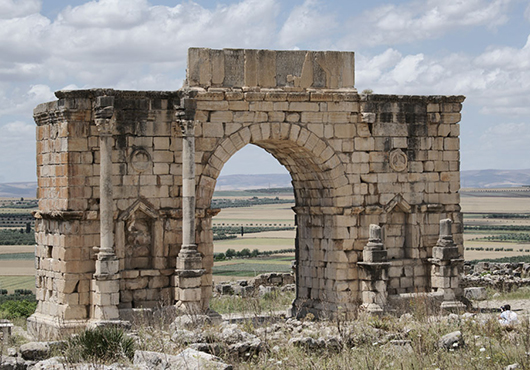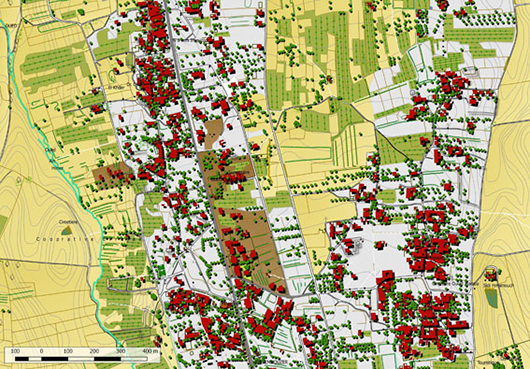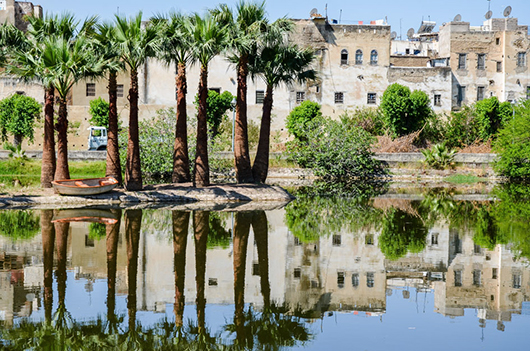Dar_Med
|
The Research Unit DarMed originated in a group of teachers and researchers of the University of Florence in accordance with the Shared Declaration of 6 July 2015 made by the Ministers of Education of both Morocco and Italy, aimed at launching the École Euro-Méditerranéenne d’Architecture, Design et Urbanisme de Fès, co-created by the Università di Firenze and the Université Euro-Méditerranéenne de Fès. Stemming from this experience, the Unit operates in the Euro-Mediterranean contexts with the purpose of combining knowledge and competencies related to specific fields within a common vision focused on the role in terms of the project of both material and intangible heritage.
Framework and purposeThe processes of change that are taking place today in the Mediterranean countries involve, especially for those on its southern shores, fast and radical structural modifications that have an effect on the territory and urban fabric, as well as on the forms and quality of living, on landscapes, economies and relative production systems. “Modernisation” often entails the loss of relevant and strategic heritage values from a long-term perspective (environmental resources, settlement models, building techniques, local production). The answer to the challenge of how to combine the drive for change with the preservation of local cultures and sustainable development cannot be understood in conservative terms, or by rejecting innovation. It is rather in the way and intensity with which these imposing transformations are regulated that the crux of the matter lies, as well as in the determination of correct and innovative valorisation strategies. From this point of view, heritage knowledge systems - traditional knowledge – are considered as key elements since they are an expression of the meeting between community and place, a depository of knowledge developed from the specific resources present in an environment, as well as rules and principles for design characterised by a high degree of contextuality and sustainability which can be adapted to contemporary technological solutions. The issues regarding heritage and the project (heritage, cultural heritage, design) – placed at the centre of the Research Unit – contain a series of transversal questions involving a variety of sectors and fields, thus offering the opportunity to intersect methods and experiences: the architectural, design, urban and territorial scales, the various categories of analysis, the various uses in time, the level of perception of the historical and identity values, and the technical-cultural know-how aimed at valorising the relationship between old and new. Heritage and project are in this sense the energy behind the transformation and recomposition of human and cultural landscapes of the cities and places of the Mediterranean. The Research Unit, which includes academics from different scientific fields, aims to develop studies, research and pilot projects characterised by a strong interdisciplinary nature and focused on the Mediterranean basin through a heritage approach which – considering on the one hand the historical depth involved, and on the other the importance of the coevolutionary dialogue between nature and culture in the shaping of places – represents a project-analysis methodology which is especially fertile in this context.
FocusThe activities carried out by the Unit combine themes that are more directly related to the project, such as architecture, design, urban planning and landscape design with those related to the social sciences, such as anthropology, sociology and economy. The adopted approach combines the instances related to the sustainability, safeguarding, recovery and valorisation of the architectural, urban, landscape and material heritage with those concerning innovation, experimentation in the construction of policies, in terms of the architectural project and its settlement principles (types and variations of identity, confirmations and forecasts), as well as in processes linked to material and intangible culture. Specific areas of competence of the Research Unit, among others:
MissionThe Unit aims to participate in national and international research programmes, fostering interaction at all levels, between academic institutions, public administrations, education and research institutions and associations, start-up businesses, productive entities, companies and civil society, promoting research and the exchange of ideas and experiences, detailed interdisciplinary studies and analyses, publications, and the generation of models, pilot projects and prototypes.
Projects
Publications
|
Scientific Coordinator Thematic coordination Architettura: Città Territorio e Paesaggio: Design: Members Alessandro Brodini External collaborations Massimo Carta
|
Last update
18.05.2021




